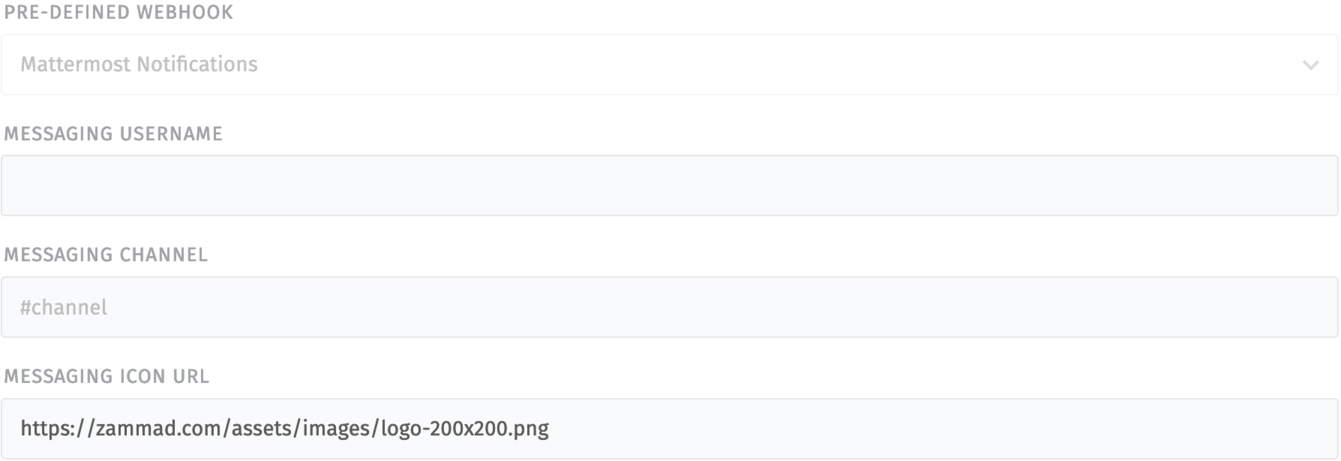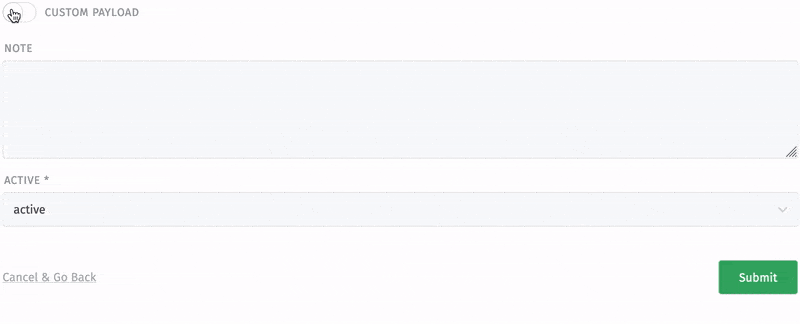Adding Webhooks¶
Webhooks are defined globally. This allows you to use one specific endpoint for several triggers or schedulers.
Warning
Default Zammad webhook payloads are specific
Keep in mind that the remote site has to be able to understand the default webhook payload Zammad is sending. Simply throwing the default payload at a webhook endpoint may not have the desired result!
See Custom Payload for a way to customize webhook payloads.
To add a new regular webhook, use the big green New Webhook button.
For a pre-defined webhook, click on the arrow button to the right and choose Pre-defined Webhook from the dropdown menu.
Next, select the pre-defined webhook you want and click Next.
Warning
⚠️ Adding a new Webhook is not enough
You must, in addition, add a Trigger or Scheduler that references the Webhook!
You can configure the following information for webhooks:
- Name (mandatory)
This name will be displayed within trigger and scheduler selections.
- Endpoint (mandatory)
Webhook endpoint Zammad sends its payload to.
Zammad ignores basic authentication parameters. See below how to configure username and password via separate fields.
- HMAC SHA1 Signature Token
If set all sent webhooks contain a x-hub-signature header allowing the remote site to verify the request.
Note
🔐 Security note
This does not encrypt the payload. Use HTTPS connections to secure the communication. It contains a HMAC signature of the body of the webhook request
- SSL verification
Defaults to
yes- if you’re using unsecure self signed certificates set this option tono.Danger
Please be aware that turning off SSL verification is a security risk. It should only be used temporarily or for testing purposes. If turned off, there is no verification of the certificate, which means that any presented certificate will be accepted.
- HTTP Basic Authentication Username
Set this if the endpoint requires HTTP basic authentication credentials.
- HTTP Basic Authentication Password
Set this if the endpoint requires HTTP basic authentication credentials.
- Pre-defined Webhook
This field is only available for pre-defined webhooks!
This field is always disabled in the UI and serves only as a reference to a pre-defined webhook. It is not possible to change it for existing webhooks.
Depending on the pre-defined webhook type, additional fields may be rendered below this one. They can be used for additional customization of the webhook behavior.

- Custom Payload
Defaults to off - webhook will always send Default JSON Payload to the target endpoint.
When switched on, a code editor will be shown below, where you can configure custom payload for your webhook in JSON format. To insert supported Variables use
::or#{shortcuts for autocomplete.Custom payload must be valid JSON syntax! Code editor will inform you via automated hints if there is an issue with the code. Also, it will not be possible to save an invalid JSON structure.

Hint
Pre-defined webhooks will always provide an initial custom payload, specific for the associated service.
- Note
If required you can leave useful information for other Zammad admins to understand the webhook in question better.
- Active
If set to
inactiveyou can no longer select the webhook within trigger or scheduler actions.Inactive webhooks used by triggers or schedulers will not be fired. If triggers or schedulers have other actions configured as well they will still be executed.


